One of the regular article features in each issue of Southern Soil is Table Talk. In those articles, I have conversations with individuals involved in the local food system to discuss issues related to sustainability and how we can do better. I provide their perspectives for readers to view, but I keep my own side of the conversation out of it.
In this blog series, I’ll be addressing those issues myself. This is the second blog post in this series, the first of which we (ok, I) established that it’s perfectly normal to talk to oneself and I explained why it is that I started Southern Soil and do what I do.
In this post, I’ll answer the question: what does the current food system look like here in Southeast Georgia?
In my opinion, our current food system here in Southeast Georgia epitomizes what has gone wrong with industrial agriculture and the globalization of our food supply. We depend on “cheap” foods.
We depend on them because this is a largely economically depressed region where consumers are constrained by finances. We depend on “cheap” food because rural Georgia has become as much of a food desert as urban areas, perhaps more so because the distance to travel good food sources is even greater than those in metropolitan areas. And we depend on “cheap” food because logistically speaking, quality local food is not readily available even for those who have the means to purchase it.
Most readers will likely understand what I mean by “cheap” food, but I’ll clarify briefly. Cheap foods include overly processed foods readily available at every grocery store, most convenience stores and your average fast food restaurants. Foods full of preservatives, chemicals, fats and usually a good dose of “added nutrients” supposed to make up for all the other crap that’s in them. These are the foods that have become sadly typical of the American diet. These are foods that are inexpensive, readily available, easy to prepare (or eat right of the package). These are also the foods that have made billionaires. These are the food-like products that are advertised on billboards, TVs, radios and internet around the world.
The other aspect of “cheap” food are the meats, produce, dairy and eggs found in the average grocery store. Produce that often come from overseas where laborers are more easily exploited. Meats produced in CAFOs (see previous blog post for why this is messed up!). Products that seem “cheap” because of the price tag at the grocery store, but are costing us in poor health, destruction of our ecosystems and environment, and are heavily subsidized by our own tax dollars.
If you look at a map of Georgia that shows median income levels, there is basically a line that divides the State between North Georgia and South Georgia. It’s one of the reasons I chose to limit the coverage area of Southern Soil the way that I did. Because our situation here is much different from our neighbors around Atlanta and Macon.
Because much of our population here is rural, economically depressed and less educated; we have different barriers to sustainability. We can’t expect the majority of the local population to embrace the local, sustainable food movement because most of us simply don’t have access. In some cases, that access is limited by finances and in other cases that access is limited logistically - either the local supply is not there, or it’s not convenient, or it’s not known to the consumer.
Just using myself as an example. You’d be hard pressed to find anyone more committed to the idea of eating local sustainable foods. But I still depend on “cheap” food options way more than I would like to. For one (without calling names), I live in a town, and a county for that matter, that does not have one sustainable producer or purveyor. At a minimum, I have to drive 30 minutes to have access to any of the wonderful “local” products that I enjoy. Sometimes, that’s just not possible. Sometimes, I don’t have the grocery budget for it. Sometimes, I simply don’t have the time to spend an hour on the road to go get some groceries. That’s life.
From a consumer perspective, the financial barrier is not insignificant. But neither is the logistical one. Farmers Markets are great and are doing a wonderful job of helping farmers and consumers connect. But, for many of us, there isn’t one nearby. And for many who may have one nearby, they may not want or be able to devote every Saturday morning to do their grocery shopping.
If I had to use one word to describe our current situation here in Southeast Georgia, I’d probably have to go with “frustrating”! And as I’ve just read about one more local place going out of business this week, I feel like sometimes we are taking one step forward and two steps back.
It’s kind of a dismal picture of our current situation, but up next I’ll describe what I think our local food systems SHOULD look like and what steps I believe we can take to get there!














